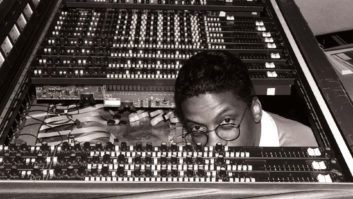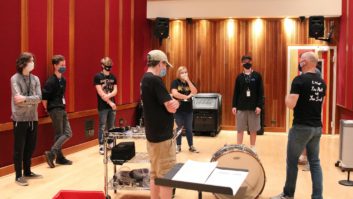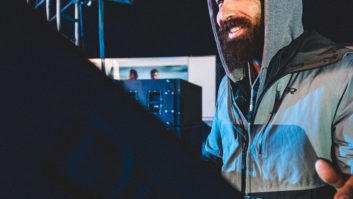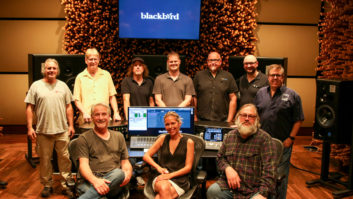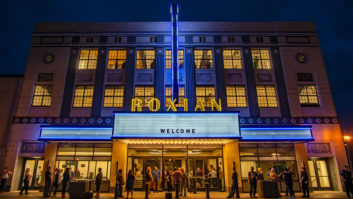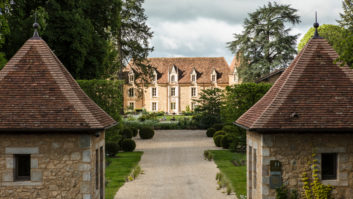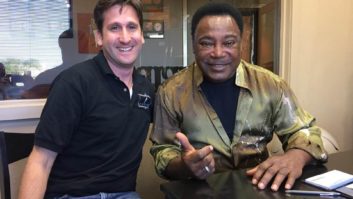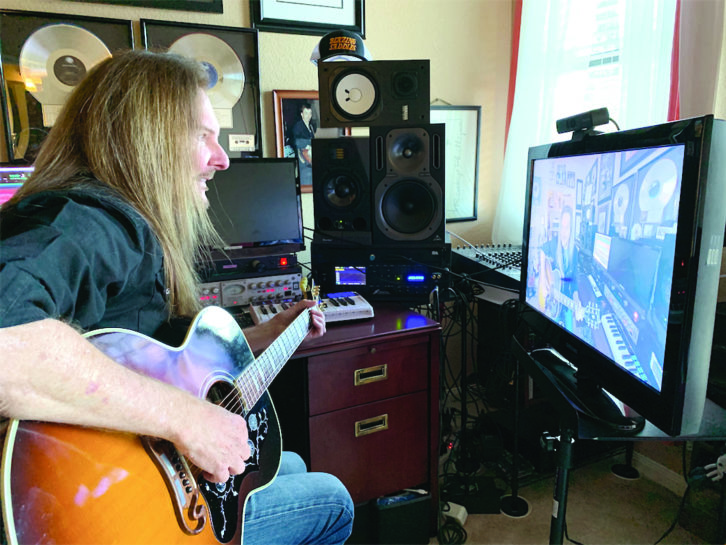
Styx Improving on Zoom
When the live music industry ground to a halt in early 2020, legendary rockers Styx quickly pivoted away from their planned tour to focus on direct engagement with their more than 1 million fans who are members of the online Styx Lounge. As the band increasingly made remote collaboration and fan outreach a daily practice, bassist and self-described gearhead Ricky Phillips noticed that one component in his Austin, Texas, home studio was limiting the experience: a barebones webcam.
“Music is my life, and video communication has brought artists and fans closer together than ever before,” Phillips says. “From websites where we can share or post videos, music ‘magazines’ that host performances, online video fan clubs, the ability to record Master Classes and more, video has become a crucial tool for musicians to connect with fans and create new opportunities. My $100 store-bought webcam seemed good enough when we first began working from home, but when I recognized that video would be my main mode of visibility for the foreseeable future, I knew a more professional solution would make the experience far better.”
Phillips upgraded with the ClearOne family of Aura videoconferencing cameras and microphones. Now, using a UNITE 200 PTZ that features programmable movement presets for automated filming, a UNITE 50 4K ePTZ camera that provides full room coverage, and a CHAT 150 speakerphone, Phillips has a truly professional-grade, multi-angle home office videoconferencing solution with endless possibilities.
“Once I saw the quality and special features ClearOne’s Aura cameras and microphones offer, my decision was basically made,” says Phillips. “Not only does the true HD image blow away my past cameras, but it’s a huge advantage to have point-tilt-zoom (PTZ) models that can be adjusted on-the-fly with a remote, or even be programmed to automatically move as video records. I’ve used this to film short clips where I’m talking or playing, but the camera can move or refocus to highlight records on my wall, the neck of my guitar, or anything else I want to focus on.”
“When we do something like a Q&A Masterclass, it’s all about the fans,” Phillips adds. “Especially now, when the funds are going to support our crew, our family, making sure that we put on the best show we can is priority number one.”
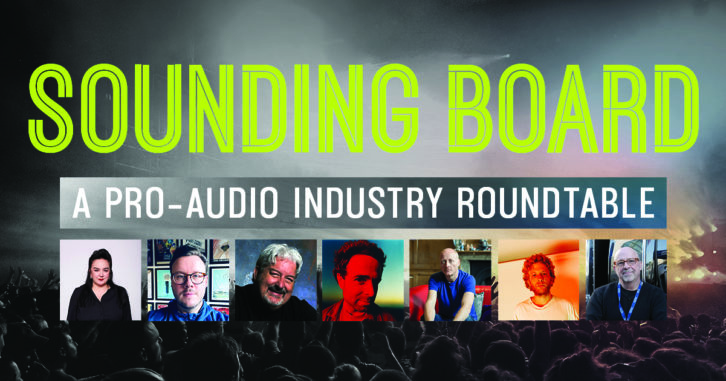
Shure Roundtable on the 2021 Music Business
The professional audio industry spent much of last year pivoting and adapting to the current state of live events. From live-stream concerts to pre-taped performances from artists’ bedrooms, the entire industry was forced to adjust to a new way of working.
To bring the industry together, Shure gathered an all-star panel of guests to offer their own perspectives on how the current situation has impacted their professional lives and day-to-day reality. The 90-minute roundtable chat offered unique viewpoints from bands, venues, music labels and more, including Julie Weir (Sony Records UK, Music for Nations), Adam Thurston (Audiotree, Lincoln Hall, Schubas in Chicago), Glen Rowe (KYOTO Music, Muse), Taylor Goldsmith and Griffin Goldsmith (Dawes), Greg Morrow (Session Drummer), and John Harris (Mixing Engineer). The panel was moderated by Peter James, Vice President of Global Professional Audio Sales at Shure.
Regardless of profession, all panelists agreed that there’s been a rebirth of creativity. From writing sessions over Zoom to recording new music to developing platforms to consume the content, the industry has never been more creative.
“People are really desperate for new music,” said Julie Weir, Sony Records. “We had a Top 10 record in the UK with a heavy metal band because we did an interesting campaign that was all-digital and people engaged with. It has taken longer to do smaller things, but I’ve never been more creative because you talk to more people now and there is more collaboration coming through. Artists are open to thinking outside the box.”
“Around May and June, studio work picked up a bit,” added Griffin Goldsmith of Dawes. “Then it was really busy. Everyone is making records because we can’t tour right now, and people are finding ways to be creative. It’s definitely inspired some pretty awesome music.”
Technology has certainly enabled creative collaboration.
“Artists don’t want to come to the studio in-person,” said mixing engineer John Harris. “In some cases, studio engineers have sent remote facilities to the artists so when they put on headphones, they can speak with the studio engineers as if they are right there and are able to carry on their craft. If we can establish a good way to do live TV and music performances remotely, are companies going to want to pay to fly out 25 people for one performance?”
“The big worry is not just live events in general, but the live ecosystem and the people who work in the live events—the tour managers and tour bus companies,” noted Weir. “There is maybe 20 percent of people left in the industry because people had to get other jobs. There is not going to be enough people to go around. When we get back into it, a minimum crew is what our issue is going to be.”
“Nothing is ever going to replace being at a show,” Adam Thurston of Audio Tree said. “Live streaming will not replace that, but it will introduce more music to people. Most people don’t live within a hundred or two hundred miles of a music venue, so having a way to present good-quality content for people to watch in the comfort of their own home will have a lot of people interested now and in the future.”
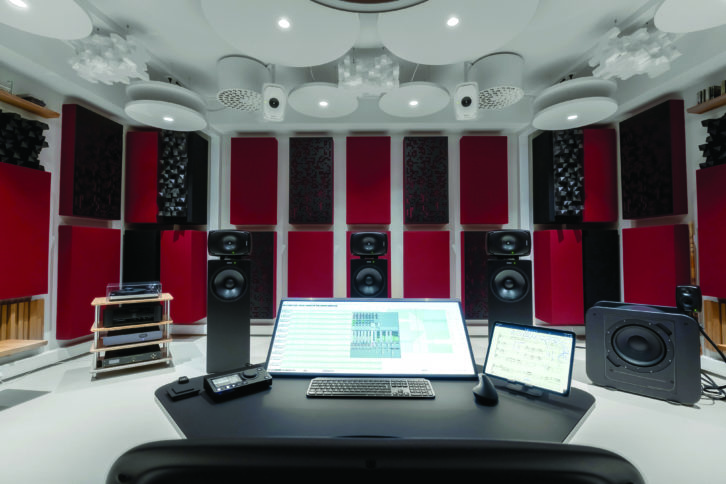
Morten Lindberg and Immersive Mixing
In the world of immersive music recording, few have done more than Grammy-winning sound engineer and music producer Morten Lindberg to set the gold standard for what can be achieved. Having embarked on his recording career back in 1992 through his production company Lindberg Lyd, Lindberg set up the 2L record label to specialize in high-quality recordings featuring Norwegian composers and performers and an international repertoire.
Lindberg recently upgraded the monitoring system in his post-production studio, installing Genelec Smart Active Monitors and woofer systems in a 7.1.4 configuration.
“Once you’ve experienced immersive audio, then coming back to stereo is really difficult,” says Lindberg. “When I started doing recordings back in the early ’90s, stereo was our perspective to work with; it was what we had. Then came surround sound in the early 2000s, and that opened up a whole new wide image to music reproduction.
“When we started to experiment with immersive audio, what we expected to gain with adding the height dimension was to simply increase the level of detail and resolution,” he continues. “How much space would be available to the instruments and to the musical lines, the size of the canvas available to the chords, and so on. But that was not what we got. What we got was an emotional component. By adding the third dimension of the soundscape, the emotional impact to the listener was increased tenfold.”
Lindberg’s newly upgraded post facility is designed specifically for the editing, mixing and mastering of immersive audio. Compatible with both Dolby Atmos and Auro-3D, the monitoring system is largely based on models from “The Ones” series, starting with seven 8351B coaxial three-way monitors in the bed layer, all complemented by W371A adaptive woofer systems.
The height positions are handled by four of the lighter, more compact 8341As, with a 7380A subwoofer handling the LFE. Additionally, an 8320A compact two-way nearfield monitor sits atop the 7380A to provide an upward frequency extension above 120 Hz, acting as a checkpoint into the true content of the LFE channel before it is distributed.
“I found that the coaxial design of The Ones gives amazing imaging not only in surround, but it actually adds to the full surround and extends to the height dimension, preserving that precise detail of our source,” Lindberg explains. “All The Ones models that we used have full bandwidth capabilities on their own, so the intention with the W371A was really to reach down into that tactile, haptic aspect of sound, to reach down into the part of the sound experience which transitions from audio into the vibration range.”
“Our whole body is actually a very sophisticated sensory system, and the body’s experience of music is much broader than our traditional definition of audio,” he adds. “There are different directivity modes you can use on the W371A woofer that might help out if you’re in a smaller or compromised room—but in a room like this, which is spacious and has an overall good sound quality, I found that the basic complementary mode of the W371A sounds to me the most open and natural extension into the tactile area, where it kind of moves your belly.”
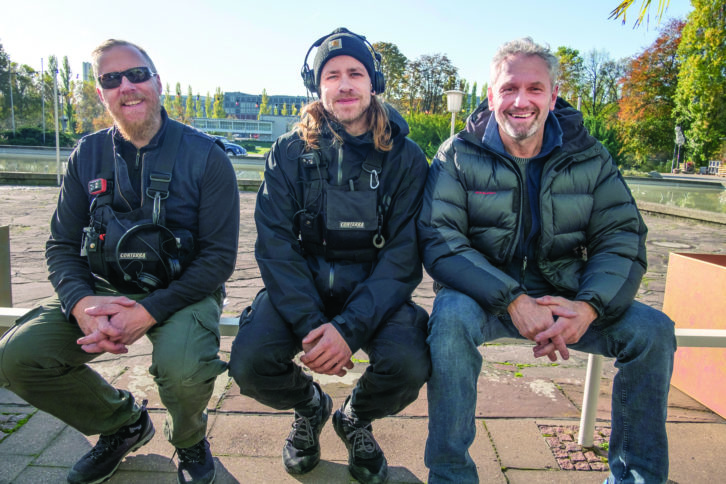
Soundcheck and Checkmate on ‘The Queen’s Gambit’
Berlin-based production sound mixer Roland Winke is a go-to call for those filming internationally. Highlights of his career include 2016’s A Hologram for the King starring Tom Hanks, the 2011 spy thriller Hanna with Cate Blanchett and Saoirse Ronan, the sci-fi epic Cloud Atlas, and the 2004 historical drama Downfall, which spawned the well-known “Hitler Reacts” parodies on YouTube.
His latest gig was The Queen’s Gambit. The tale of orphaned chess prodigy Beth Harmon rising to world champion while struggling with addiction is one of Netflix’s most watched series ever and has rekindled worldwide interest in chess. To capture the globe-trotting matches in breathtaking venues, Winke relied on his Lectrosonics Digital Hybrid Wireless rig, comprising SMB and SMDB transmitters (with HMa plug-on transmitters for boom mics), UCR411a receivers and a Venue2 modular field receiver.
“If anything makes my work more complicated, it’s that I like to capture as much sound as I can from as many places as I can,” says Winke. “The chess clock, the pieces on the board, the ambience of the room, the sound of Beth’s shoes as she walks into a hotel or chess match for the first time. To make the viewing experience immersive, we wanted to record as much of this on set as possible, as a basis for the post-production. For this, we used a Decca tree miking technique with three omnidirectional mics and the HMa transmitters.”
Winke’s move to Lectrosonics was initially driven by a familiar problem: shrinking frequency spectrum. “About ten years ago, we started having the same problem in Europe that that U.S. has had over the past couple of years,” he explains. “Cell phone carriers started occupying a lot of the upper UHF spectrum we in production were accustomed to using. So, I started looking for a new system, and I wanted the best. It had to be small, the audio quality had to be as good as using a cable, and it had to be able to run on batteries so I could take it anywhere”.
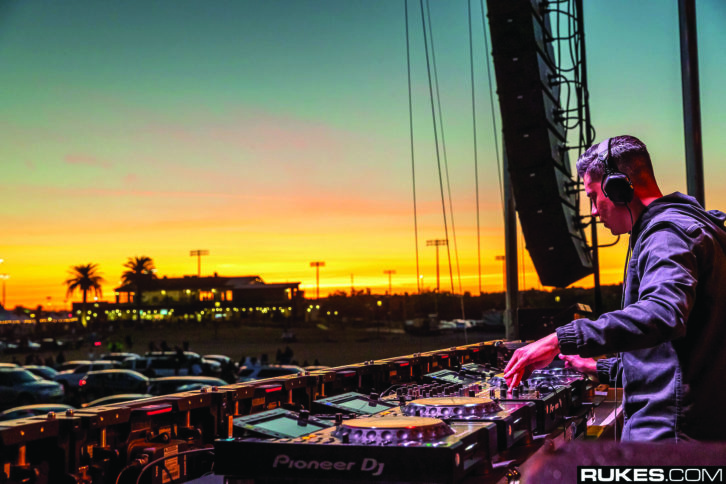
Drive-In Concert Rings in the New Year
SilverLakes in California is best known for attracting sports fans and horse-riding enthusiasts with more than two dozen full-sized soccer fields and five equestrian areas. But this past New Year’s Eve, the complex upped its showmanship game by serving as the high-energy host site for a drive-in concert headlined by superstar DJ Kaskade, who rang in 2021 on an L-Acoustics K2 system deployed by San Diego-based Pro Systems AV.
Selling out its maximum capacity of 700 vehicles, the show opened with sets from J. Worra and Ravell before Kaskade took the stage, wrapping up more than six hours of EDM music in SilverLakes’ concert area known as The BackYard.
In addition to designing and deploying all of the show’s lighting and video production elements, Pro Systems AV supplied the loudspeaker complement, which primarily comprised flown main arrays of 12 K2 elements per side, plus 20 KS28 subs ground-stacked in five cardioid pods of four across the face of the stage. Two A15 per side, stacked on scaffolding, served as infills for the vehicles parked directly in front of the projection screens, while six towers of five Kara and one SB28 provided delay.
Per Kaskade’s rider, on stage was a set of “Texas headphones”—three Kara enclosures strapped down onto a single KS28 on both the left and right sides of the DJ position for monitoring. Five LA-RAK II, each loaded with three LA12X amplified controllers, plus an LA4X, provided power for the main P.A., outfills, subs, and monitors, while the delay towers were driven by two LA-RAKs per row.
“Considering the throw distance and SPL required for a huge drive-in show like this, we were at first concerned that we wouldn’t have enough P.A., but, as always, our L-Acoustics system performed beyond expectations,” shares Pro Systems Production Manager Tom Laveuf. “The main P.A. threw approximately 200 feet, and we had our first row of Kara/SB28 towers starting at 180 feet, pushing approximately 140 feet, and another row of Kara/SB28 at 320 feet taking coverage the rest of the way. Even though we pushed the system nearly to its limits, it gave us fantastic clarity and intensity throughout the entire audience area, left to right and front to back. Low-frequency coverage was plentiful throughout the festival grounds, as well, and was clearly extended by the SB28 at the base of each tower.”
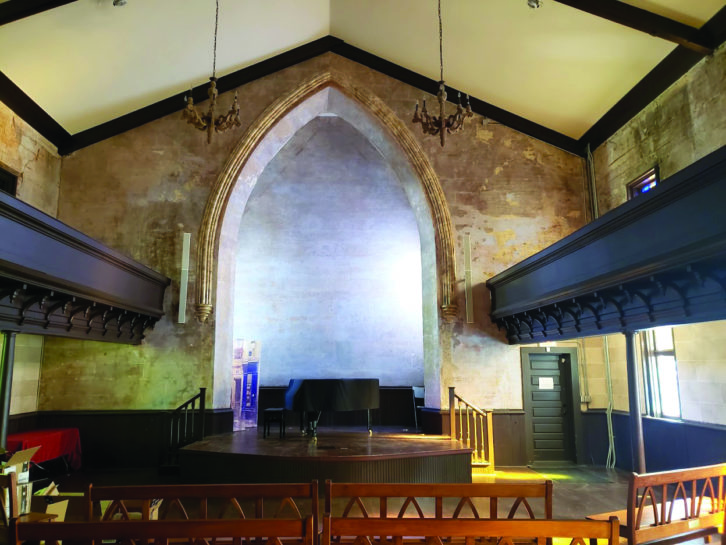
Fighting Historical Reverb
The Cultural Arts Center in Lancaster, SC, was constructed by the First Presbyterian Church congregation in 1862 as the first brick church in the town, with an architectural style dubbed early French Gothic Revival.
With the departure of the First Presbyterian congregation in 1926, the building was used intermittently for a variety of historical and cultural purposes over the next 30 years, Then, despite repeated renovation efforts, it gradually fell into decay. In 2008, with the assistance of the City of Lancaster and private donations, the Lancaster County Society for Historical Preservation launched a concerted effort to restore the church structure and to bring it back to a new life as the Lancaster Cultural Arts Center. In 2010, the first concert was held in the restored building.
Major changes in 2020 included the addition of a spacious vestibule/ lobby, a large “green” room and new bathrooms for both the audience and performers. The grand re-opening took place on November 5, 2020.
The new Lancaster Cultural Arts Center recently upgraded its sound system to two d&b 24C cardioid column speakers with 24C-E column extenders. The P.A. is primarily for speech, background music, and acoustic/unplugged-type scenarios. The very small, but reverberantly warm, venue also holds events featuring classical piano, small orchestra, jazz, and classical music, and currently holds events with a Covid social distancing procedure in place.
“The 120-seat room has an average decay time of approximately 4 seconds and is a loud room acoustically,” states Jerry Temple, owner of XL Mediaworks, which installed the d&b system. “Minimal noises such as a door closing resonate the space, and un-amplified speech is un-intelligible. The space is also used for community meetings and things such as local political debates where intelligibility is required.”
In order to address the needs of such a challenging space, XL Mediaworks arranged the 4-inch LF drivers of the in a cardioid setup to deliver significant directivity down to 370 Hz, and, when combined with the 24C-E extender, directivity extends down to 190 Hz. The cardioid pattern produces minimal energy behind the loudspeaker, reducing reflections and resulting in balanced level distribution across the listening area to provide a high-level of intelligibility.
“The client did not want any acoustic treatment in the space but wanted both great speech intelligibility and premium-quality sound,” says Temple. “Having installed many 16C and 24C systems, we knew the 24C and 24C-E would be the best solution. Also, the d&b 10D amplifier allows systems such as this to be designed and deployed with one amplifier, which helps for the overall budget.”
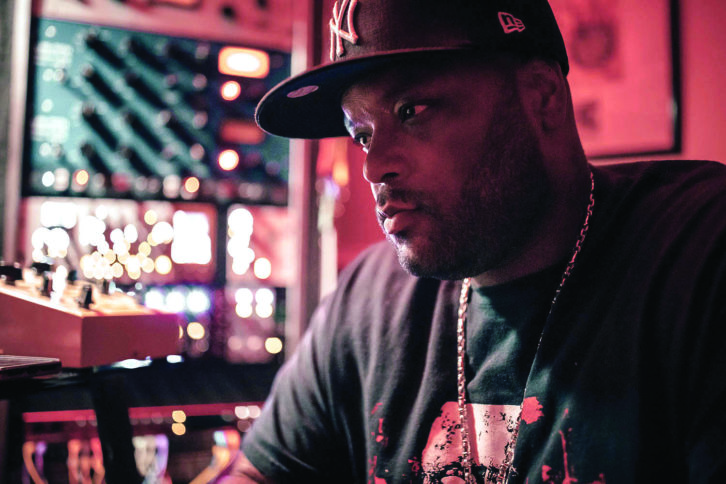
Bless This Mix
DJ Bless, who often goes by his darker alter-ego, Sutter Kain, was a songwriter and producer first and only became known as a mix engineer when other musicians needed his help to achieve his signature “Ghetto Metal” sound. Now heading into his third decade in the industry, DJ Bless has worked under MCA Records, Capitol Records and his own label, Never So Deep Records. He also produces tracks for HBO and Elijah Wood’s horror movie company SpectreVision, among many others.
Even with so much going on, DJ Bless still makes time for Sutter Kain originals. Citing Metric Halo’s ability to “be anything,” he used the company’s plug-ins for his forthcoming Kain full-length Death Has Found Me.
“I was always into metal as a kid, and I didn’t get into hip-hop until junior high school,” says DJ Bless. “Even then, I only liked hip-hop that had the energy of metal—Wu-Tang, NWA, things like that. Ghetto Metal is the most brutalist hip-hop meets the most brutalist metal. When my Sutter Kain album August Underground blew up in 2008, I wasn’t taking mixing seriously. But then people started sending me stuff because they couldn’t get my sound. I had to take it more seriously and became known as a mix engineer.
“I really love the sound of Metric Halo plug-ins,” he continues. “They’re very intuitive. With the Production Bundle, it’s all in there. You’re not stuck with one sound. So, I think of my rig as a Metric Halo console that can become anything I want it to be—SSL for drums, Neve for vocals, whatever. That said, I do keep my sessions simple. I get almost everything I need with Metric Halo ChannelStrip and Metric Halo Character. They’re my go-tos.”
“Also, Metric Halo converters sound fat, big and warm,” he adds, p;anning to employ them on his next project. “All A-1! I might pick one up for the inputs alone. I use old drum machines like [an E-mu] SP-1200 and I need hardware inputs. The Metric Halo ULN-8 has awesome-sounding preamps and converters, plus it has AES and S/PDIF, so I can lock it all in there. That will give me the full Metric Halo board.”
